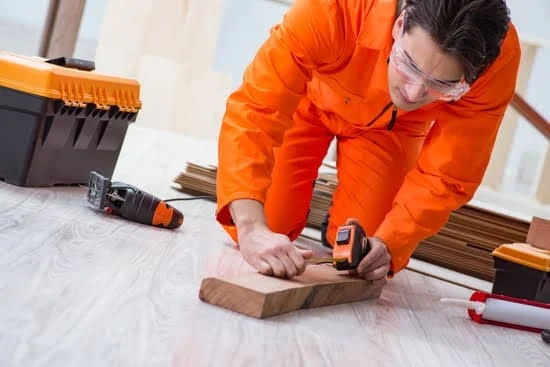Introduction to Woodworking and an Overview of Orbital Sanders
Woodworking is an art and a craft that has been around for thousands of years. It involves the use of wood to create functional, decorative or structural pieces. Whether creating furniture, sculptures, toys, or anything in between, woodworking is an intricate process that requires skill and patience. To help aid in the creation of these pieces, we have tools such as orbital sanders. Orbital sanders are versatile power tools for shaping and smoothing surfaces made out of wood, metal, plastic and more. They feature a disc-shaped pad that spins at high speed and offers a powerful way to quickly sand the surface without leaving any marks. They also come with variable speed settings so you can adjust the intensity of your project depending on the type of material you’re working with. They also have built-in dust catchment systems to keep your sanding area clean and consistent throughout the entire process. The downside is that they are loud and could potentially be dangerous if not used correctly. When using them it’s important to always wear protective gear and follow safety procedures set forth by your work environment to ensure everyone remains safe throughout the process; because of this it may be best for beginners to stick to hand sanding when starting off their projects if possible until they feel comfortable enough working with power tools like orbital sanders.
Finding the Right Orbital Sander for Your Project
Choosing the best orbital sander woodworking can be daunting if you’re unfamiliar with the various types available. It’s important to consider your specific project, as the type of sander that you need will depend on the job you are attempting to accomplish. The most common types are belt sanders, random orbital sanders, detail sanders, palm sanders, and disc sanders.
Belt sanders use a continually cycling belt which is used frequently for large scale surface leveling projects. This type of sander should never be used on a finish-grade material because the large gap between belt revisions can leave marks in the finish. Random orbital sanders use a round disk which is perfect for achieving a smooth level surface quickly. These tools often come with variable speed controls allowing for greater variation when working on different materials such as wood, plastic, or drywall.
Detail sanders offer precision that cannot be matched with standard orbital or belt sanders; however they are suitable only for smaller jobs that require detailed attention such as intricate grooves or edges of furniture pieces where clean lines are desired. Palm and disc sanders provide convenience when getting into tight spaces; due to their small size they have very limited use and may not be suitable for more expansive projects that cover larger areas requiring more power.
When selecting the best orbital sander woodworking tool it is important to take into consideration that each type of sander serves its own unique purpose depending on the job you are attempting to accomplish. Therefore it is advisable to factor in what kind of material you will be working with as well as how much area needs to be worked and choose accordingly. Also bear in mind that certain levels of protection must be taken into account when operating any such machine including protective goggles, hearing protection, dust masks etc; especially when working on bigger scale projects as greatest caution should always be observed
Prepping the Work Area and Materials for Sanding
Before getting started with sanding, it’s important to properly prepare your work area and the materials that you’ll be using. Consider clearing the space around where you’ll be working and organizing any tools, equipment, and materials that you might need. Additionally, make sure to put on protective head and eye gear as a safety precaution • Clean off any debris from the surface of whatever material you are working with since it can be damaging if sanded. Once that’s done, follow your orbital sander woodworking plans and select the right grit of sandpaper for your task at hand; generally speaking, 220-grit paper is good for basic sanding while higher-grit papers are better suited for polishing surfaces or intricate projects. Use clamps or other means of securing your material so that it remains in place throughout the sanding process.
Basic Safety Tips When Working with Power Sanders
When operating a power sander, always wear safety equipment such as safety goggles or glasses, gloves and hearing protection. Make sure the workspace is well-ventilated to avoid breathing in sanding dust which can be harmful if inhaled. Before plugging in your sander, check for any broken or worn parts and damage that may have occurred from improper use. Be aware of any trailing power leads to and where they are located to avoid accidental cutting or snagging on them. Read through the user manual before using and become familiar with the sander’s features. When using an orbital sander, keep downward pressure even while working in a slow and controlled motion to ensure uniform finish with no uneven spots. Keep an eye on the temperature of the sandpaper to make sure it doesn’t get too hot and start smoldering which can cause a fire hazard as well as discoloring the wood surface. When finished sanding, turn off the machine and unplug it instantly; never leave it running unattended! Lastly, be sure to store all power sanders away safely out of reach of children when not in use.
Woodworking Techniques for Optimal Orbital Sander Performance
To get the best results from an orbital sander, woodworkers must use the correct techniques and ensure that their equipment is in good working order. First and foremost, the sander itself must have a smooth-running motor with adjustable speed settings for different applications. The use of a dust collection system greatly reduces the amount of sawdust produced, allowing for an efficient and clean work area.
When sanding, it’s important to keep the orbiter moving, never allowing it to sit in one spot too long to prevent gouging or burning of the wood surface. Sandpaper should be properly chosen to fit each job–coarse grit paper will remove material quickly whereas fine paper can be used for polishing and finishing. Woodworkers should also apply even pressure while sanding in order to achieve an even finish throughout the entire surface.
Beyond these basic techniques, many craftsmen also like to start with a lower-grit paper when sanding hard materials such as plywood. A higher-grit paper should then be used for a finer finish on softer woods such as pine or cedar. Finally, orbital sander users should always review their work periodically and assess if additional steps are necessary such as switching out sandpaper or changing speeds on their tool. Following these simple steps allows woodworkers to make sure that their orbital sander performs at optimal levels for every job!
Finishing Touches
An orbital sander is an invaluable tool for the woodworker. It not only enables you to sand and buff surfaces quickly, it also produces professional-quality results that are second to none. The best orbital sander can give you perfect, smooth finishes on border edges and surface curves, creating a beautifully polished product every time. Additionally, using an orbital sander allows you to sand evenly on both sides of the wood without having to switch tools or grips in between.
When using the best orbital sander for woodworking, certain techniques can help achieve the desired finish. First and foremost is controlling the speed at which you work ” running the sander too fast can cause unevenness or rough patches, while going too slow can be overly labor-intensive. Additionally, it’s crucial to keep in mind that different grits of sandpaper should be used when tackling more detailed areas ” larger grits for smoothing out irregularities, finer grits for bringing out details at the end. Sanding in circular motions as well as back and forth over wider areas will also produce a uniformed finish. Lastly, taking breaks throughout your project allow you to constantly check if any ridges or bumps have been missed so they can be handled in one go. By maintaining these practices consistently along with understanding how to choose the right type of paper and sanders for each job, setting up the best orbital sander will ensure top-notch results every time!
Advantages and Disadvantages of Using an Orbital Sander
Advantages:
• An orbital sander is able to produce a very smooth finish compared with other types of sanders, due to its superior speed and maneuverability.
• Its smaller size and light weight make it easier to hold and control.
• Orbital sanders are generally easy to operate and can produce less dust than other types of sanders.
• When used in combination with finer grits, they are able to ensure an even finishing on hardwood surfaces that cannot be achieved by hand-sanding.
Disadvantages:
• While orbital sanders are effective at creating a smooth finish, they are not suitable for shaping or contouring surfaces.
• If used on delicate surfaces such as softwoods, the high speeds used by many orbital sanders can create burn marks or scratch the surface.
• They can also leave unsightly swirls in the wood if not operated correctly. In addition, using an orbital sander can often take longer than using more traditional methods of preparation when working with large pieces of wood.
Final Thoughts and Where to Find More Information
Finding the best orbital sander for your woodworking needs is an important task and should be treated as such. There are a variety of factors to consider when searching for an orbital sander, such as whether you plan to use it on rough surfaces or fine finishes, its power and speed, the dust collection system, and more. You also need to take into account your budget and what type of materials you need to be able to sand properly with the chosen tool. It’s important to read reviews from other woodworkers so that you can get an idea of what type of machine will work best for your shop and project requirements. Additionally, there are many instructional videos available online if you want additional information about how to use different types of sanders before making a purchase. Speaking with experienced woodworkers or going to your local hardware store can also help narrow down the options and allow you to pick an appropriate model for your shop’s requirements. Once you have selected the right orbital sander combo set, you should maintain its care by regularly oiling any moving parts, replacing pads when needed, and performing any troubleshooting tasks necessary per instructions in the manual. Doing these simple actions will ensure that your machine lasts a long time without having any quality issues along the way.

Hi everyone! I’m a woodworker and blogger, and this is my woodworking blog. In my blog, I share tips and tricks for woodworkers of all skill levels, as well as project ideas that you can try yourself.





